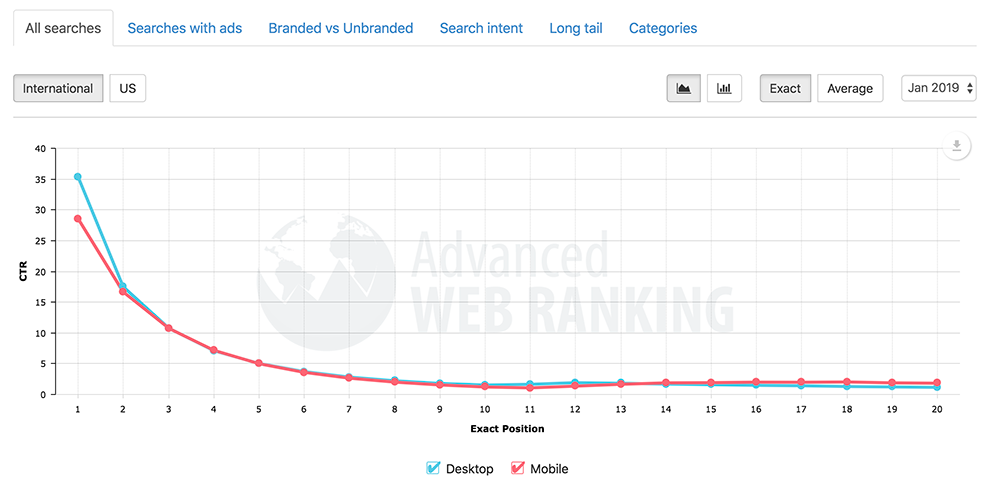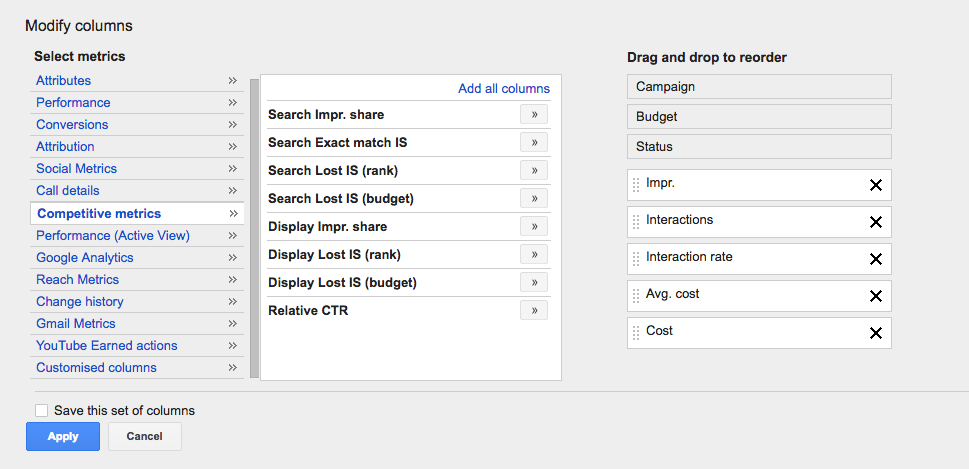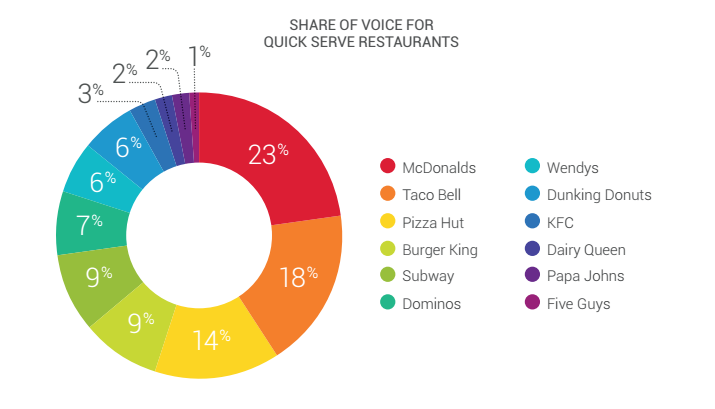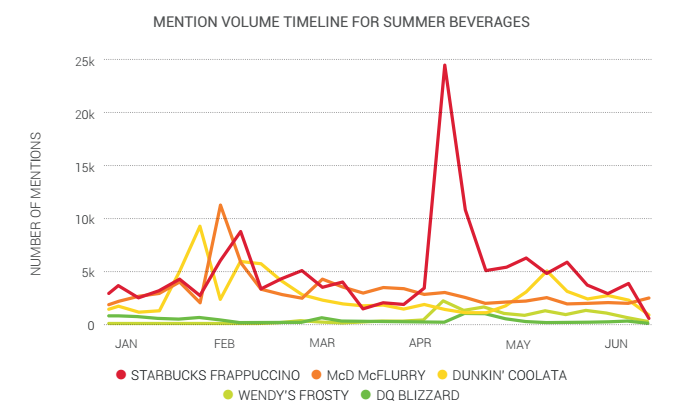As A Performance Measure, Share Of Voice Is
One of the things that keeps marketers fretting late at night is trying to decide which metrics to measure. When you have the ability to count every click and scroll, the indecisive marketer could easily develop analysis paralysis.
If this sounds familiar, think of taking online measurements like charting a map while exploring; it will record where you have been, but also help point you in your next direction.
With this in mind, measuring share of voice is a great place to start. It provides an overview of the business landscape you operate in. With the right tools in place, it can also go on to reveal deeper insights to explore further.
What is share of voice?
Traditionally, calculating share of voice involves determining how big your share of advertising is compared to all of your competitors.
The definition is now often widened to encompass online visibility in general, including organic search, PPC and social media.
I would argue that social media is the only discipline that actually produces share of voice, as it collects the voice of the customer.
PPC and organic search would more accurately be titled share of market, but current convention means I've stuck with share of voice throughout this guide.
Regardless of which area of your marketing you are focusing on, the calculation involves some variation of the original share of voice formula:
Your Brand Advertising / Total Market Advertising = Share of Voice
In the past, calculating share of voice was an imprecise art, as spend had to be estimated and competitor adverts might be missed.
With the newer avenues of SEO, PPC and social media, there are now ways to calculate more precisely. Several tools will do the hard work for you, allowing you to regularly check your share of voice for changes.
Share of voice for organic search
If you don't have the budget for tools, you can calculate organic search share of voice (SOV) manually.
Start with your list of keywords and competitors, and record the rankings of each on a spreadsheet. SEO tools will be necessary for this (such as Pi Datametrics), and they'll also make this job super-easy. Some will even have functionality to look at share of voice.
The click through rate (CTR) that corresponds for that rank will be your share of voice for that keyword.
CTR can be very hard to determine though. It will depend on the search term, the results you're competing with (a very well-known and respected website in position 1 may get a better CTR than one no one has heard of). It will also be affected by Google sticking their knowledge panel results in.
Nevertheless, you can get a rough idea from this study by Advance Web Ranking. It outlines the CTR for positions 1 – 20, and you can adjust for things like ads, intent and branding. It also gets updated with new data regularly.

To calculate share of voice for the whole keyword set, multiply the CTR with the average monthly search volume (taken from Google Analytics) for each keyword.
This will give you an estimate of how much traffic your brand can expect in the month for that keyword.
If you then total the estimated search traffic for your entire keyword set, you can use these two numbers to calculate your organic search share of voice:
Brand Traffic / Total Market Traffic = Share of Voice
To avoid all that manual calculation, there are several tools that automate this process for an at-a-glance comparison. In addition to time saved, these tools use a database of thousands or millions of keywords, so you can get a fuller picture of the organic search landscape.
You can see how much your keyword focus overlaps with others. You may have a competitor that is not focusing on SEO, and is therefore not a direct competitor in the search results page.
Share of voice for PPC
You can discover the PPC equivalent of share of voice in Google AdWords.
It is called Impression Share, and represents the percentage of times your ads were shown to users compared to the number of times your ads could have been shown, based on your keyword and campaign settings.
To discover your impression share, log in to your AdWords account, and click on the campaigns tab.
Click on the columns button, and pick 'Modify columns' from the menu. Next, click Competitive metrics, then add the Impression share columns you wish to track.

Share of voice for social media
Calculating share of voice on social media involves collecting the voice of the customer through a social media analytics tool, such as Brandwatch Consumer Research.
This customer-centric approach has two advantages: first, you are measuring the results of your efforts, rather than how much you have spent on advertising or how visible you are on Google.
Second, it allows you to dive deeper and gain consumer insights in addition to the competitor intelligence and brand monitoring. By using a social analytics tool, you can easily create a search for any mention of your brand or product and the competition.
You can start by calculating general share of voice to show how well your brand is known, and how much it is being talked about compared to your competitors. At this stage it is a straight-forward overview of who has the larger share of the conversation.

In calculating social share of voice, you can create rules and categories within the platform that allow you to automate the process and monitor developments as they happen.
Tracking SOV in the longer term can surface campaign intelligence insights to monitor marketing efforts.
While this initial analysis will give you a snapshot for your chosen time period, a breakdown of product or campaign mentions over time allows evaluation of campaigns.
A more detailed analysis of any peaks in engagement can highlight which aspects of the campaign were successful.

Collecting the voice of the customer allows you to categorize the mentions in a variety of ways. A company that operates in several markets may wish to break down share of voice by geography. We have previously examined share of voice in the fashion industry to illustrate how insights based on different geographic differences can be surfaced.

Further information can be gained from audience demographics.
Gender, professions and interests can all reveal consumer insights that could surface opportunities within certain sections of the market.
Breaking down share of voice by page type can assist PR teams.
Coverage type can be compared between competitors and opportunities can be discovered. It also simplifies the process of discovering the quantity and quality of coverage.
Segmenting by page type makes it easier to dive into mentions to understand the quality of coverage.

Comparative sentiment analysis can also be easily viewed. In your competitor set, one brand may have more mentions, but a lower net sentiment. Again, monitoring this over time can provide valuable information for crisis comms, marketing and campaign intelligence.
Finally, the voice of the customer can be used to undertake a topical comparison. This can be great for understanding the associations consumers have between your product or brand and the competition, helping differentiation in marketing or product development.

So, that's our guide to calculating share of voice: more detailed than some would have you believe, and a great starting point to map the landscape your brand operates in.
Tracking organic search and PPC is useful for competitive analysis and benchmarking your efforts.
Social media share of voice has the advantages of collecting the voice of the customer, and giving a more accurate picture of brand awareness and perception. It also allows you to dive deeper into the data and uncover consumer insights, which can inform various strategies.
As A Performance Measure, Share Of Voice Is
Source: https://www.brandwatch.com/blog/how-to-measure-share-of-voice/
Posted by: carsonarring1990.blogspot.com

0 Response to "As A Performance Measure, Share Of Voice Is"
Post a Comment